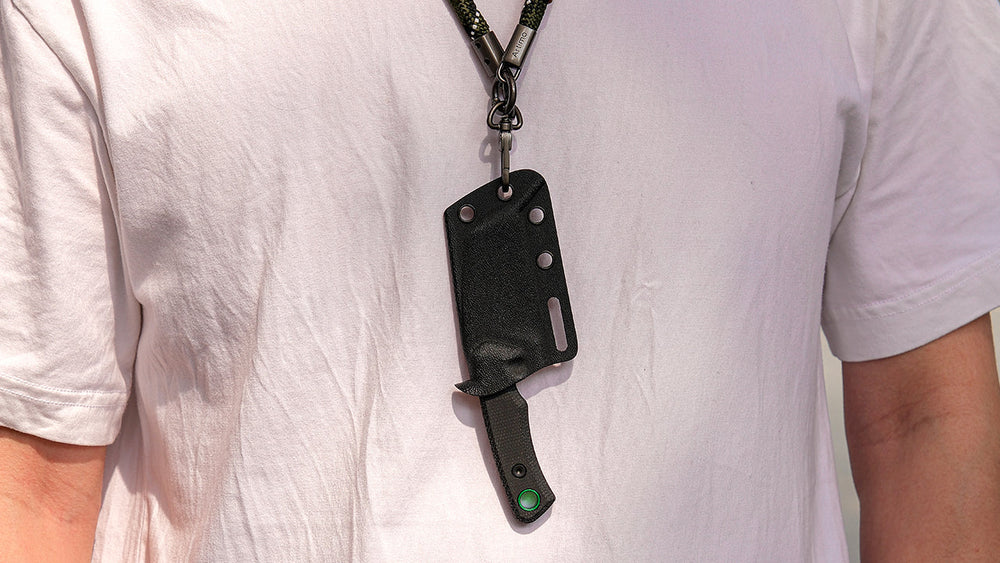Discover the Ultimate Small Neck Knife: Which Model Will Steal Your Heart?
Small neck knives have gained a significant following among outdoor enthusiasts and everyday carry (EDC) users alike. These compact tools offer a blend of functionality and ease of access, making them perfect companions for various activities, from camping to everyday tasks. As more people discover the benefits of having a reliable and portable cutting tool at their disposal, the market for small neck knives continues to expand. In this article, we will compare several popular models to help you make an informed decision when considering your next small neck knife purchase. Whether you're a seasoned adventurer or simply looking for a convenient tool, understanding the differences between these models can guide you in choosing the perfect fit for your needs.

Understanding Small Neck Knives
A small neck knife is typically characterized by its compact size, making it easy to carry around the neck or in a pocket. These knives often feature a blade length of around 2 to 4 inches, which strikes a balance between usability and portability. The blade material is usually high-carbon steel or stainless steel, providing sharpness and durability. Additionally, many small neck knives have fixed blades, which offer reliability in various tasks. The handles are often ergonomically designed, allowing for a comfortable grip during use. Their light weight and compact design make them ideal for quick access in a pinch, whether you're preparing a meal in the great outdoors or tackling everyday cutting tasks. Friends of mine who are avid campers have shared how a small neck knife has proven invaluable for everything from whittling sticks to slicing through rope, underscoring their versatility.
Key Factors to Consider When Choosing a Small Neck Knife
When selecting a small neck knife, several key factors should influence your decision. First, consider the blade material, as it affects both performance and maintenance. High-carbon steel blades are known for their sharpness but may require more upkeep to prevent rust, while stainless steel blades are more resistant to corrosion but may not hold an edge as long. Comfort is another critical factor; a well-designed handle ensures a secure grip during use, which is particularly important for extended tasks. The sheath design also plays a significant role in usability. Some sheaths allow for easy one-handed access, while others may require two hands, affecting how quickly you can deploy the knife. Weight is another consideration, especially if you plan to wear it around your neck for extended periods. Ultimately, personal preference and the intended use of the knife will guide your choice, as what works for one person may not be ideal for another.
Comparison of Popular Small Neck Knife Models
In the world of small neck knives, various models cater to different preferences and needs. When comparing these models, it's essential to look at their features, performance, and user feedback. Some models may excel in cutting performance but lack comfort, while others might offer superior ergonomics but fall short in blade durability. One popular model features a curved blade design that many users find ideal for intricate tasks, while another model boasts a straight edge, which is often favored for general utility. The choice between these designs may come down to the specific tasks you envision needing a knife for.
Model A vs. Model B
When it comes to a direct comparison between Model A and Model B, both have their unique strengths. Model A is designed with a tactical grip that many users appreciate for its security during use, particularly in wet conditions. On the other hand, Model B features a sleek, minimalist design that appeals to those who prefer a lightweight option. User feedback often highlights Model A's durability in harsh environments, making it a favorite for outdoor adventures, while Model B is frequently praised for its portability and ease of carry. If you're someone who values a robust tool for rugged outdoor tasks, Model A might be your go-to, but if you're looking for something discreet for everyday carry, Model B could be the better choice.
Model C vs. Model D
Similarly, comparing Model C and Model D reveals distinct offerings that cater to different user preferences. Model C is often highlighted for its exceptional edge retention, which means it stays sharp longer, reducing the need for frequent sharpening. This feature is particularly appreciated by those who use their knives extensively during camping trips. In contrast, Model D is designed with an emphasis on comfort, featuring a handle that is contoured to fit the hand perfectly, making it ideal for extended use. User experiences suggest that those who prioritize comfort over edge retention might gravitate towards Model D, while those focused on performance may lean toward Model C. The choice between these models ultimately hinges on how you plan to use your knife.
Choosing the Right Small Neck Knife for Your Needs
In conclusion, selecting the right small neck knife is a personal journey that requires consideration of various factors, including blade material, handle comfort, and sheath design. By comparing different models and understanding their strengths and weaknesses, you can better align your choice with your specific needs and preferences. Whether you're heading into the wilderness for a weekend adventure or simply want a reliable tool for everyday tasks, the right small neck knife can greatly enhance your experience. Reflect on the features that matter most to you, and you’ll be well on your way to finding a small neck knife that feels like a perfect fit.










Comentarios